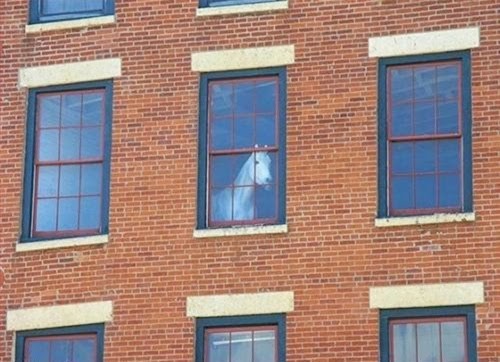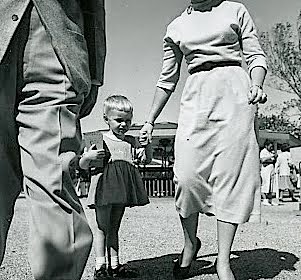
I want to take some time to introduce Freud's concept of the Unconscious. It's important to spend effort on it because the Unconscious is the centerpiece of Freud's work, it's his greatest and most well known "discovery," and for that reason the one most likely to be encountered in simplified and watered-down versions. But if one is going to really find something useful in Freud, something that helps us see anew, then the estranging and challenging aspects of his theory need to emphasized and appreciated.
And instead of beginning my own summary here, I want to start in an indirect manner and through someone else's words (two moves that I hope by now register with you as "classic" Freudian gestures). I want to quote at length from Hugh Haughton's Introduction to our edition of The Uncanny. Haughton's remarks double back to our previous work on dreams, and my previous post on the space shared by psychoanalysis and literature and in the process suggests the place of the Unconscious in this convergence.
"By presenting the dream as riddle, Freud presents himself as solving 'the essential riddles of dreaming.' By the same token, he given a new definition of consciousness in embattled relationship to the larger, more primary and largely unknown phenomenon he called 'the Unconscious.' In fact, dreams are works of art, born of a compromise between the conscious and unconscious. They can only be understood by sustained historical investigation into the imaginative life and memory of the dreamer...
Freud repeatedly represents himself, like Oedipus, as a solver of riddles, a writer faced with an apparently insoluble problem of meaning. The great founding texts of psychoanalysis...tackle human phenomena hitherto resistant to meaningful interpretation---hysterical symptoms, dreams, everyday slips of the tongue, jokes, and so-called sexual aberrations. He interprets all of them as riddling forms of meaning that can be decoded and deciphered. This involves showing that they are analogous to each other. Rather than seeing them as aberrant phenomena, he sees them as products of fundamental, central and normal psychic processes, processes that are 'unconscious.' Freud's theory of aberration seeks to demonstrate that enigmatic areas of language and behavior hitherto classified as being below, above, or beyond significance, are ultimately intelligible. They are subject to interpretation. In doing so, however, he affirms the fundamental ways in which the human mind in general---and not only the 'pathological' or 'abnormal' mind---is unintelligible or unknowable to itself. If psychoanalysis was invented as a hermeneutic as much as a therapeutic practice, it is because it is founded on a double commitment to interpretation and resistance to interpretation. In his bid to make apparently anomalous human behavior intelligible, Freud was led to construct a theory which places unintelligibility at the heart of mental processes. In fact, in an astonishing transformation of the Cartesian project, it made self-unintelligibility the paradoxical cornerstone of psychic identity. ...His master work, The Interpretation of Dreams, turned everyone's dreams into esoteric texts, the unacknowledged poetic masterpieces of everyday life. As Lionel Trilling said in a pioneering lecture, 'of all mental systems, the Freudian psychology is the one which makes poetry indigenous to the very condition of the mind.'" (ix-x)
Haughton's remarks return us to the first day of class where I remarked that Freud reads the human psyche like a poem, with a "literary" attention to the relation between form and content and extended examination of rhetorical tropes like metaphor and metonymy which layer and transform meaning. He also draws attention to the creative aspects of the Unconscious---it produces, in effect, works of art---as well as its character as an ongoing process of subjectivity---he speaks of an "embattled" relation between the conscious and unconscious. Finally, he points out how radically different Freud's "split subject" is to the post-Renaissance notion of the individual which still informs much of way most people think of "the self."
For an example of how difficult it is to break with the notion of a "whole" self, consider the the classic "iceberg" model of the unconscious:
While alluding to Freud's topographic metaphor, this visualization unfortunately suggests that these psychic layers are just parts of the same whole. The unconscious may be submerged but it is still essentially connected to and part of the same overall structure. Now contrast that image with this:
In his biography of Freud, Peter Gay references the above drawing by Austrian Expressionist Alfred Kubin. Titled Selbstbetrachtung (Self-Observation), Gay finds it an apt illustration of the violently disorienting idea of the self which Freud created in The Interpretation of Dreams: a subject not just split, but seemingly severed from illusions (dreams) of wholeness and unity.
There are three aspects of Freud's model of the Unconscious that I think are the most fundamental to think about at this point:
- What is the Unconscious and what is its function? This is basically a question of definition, but a tricky one because its hard to find a perfect metaphor or analogy for all the various characteristics Freud attributes to the Unconscious. Conventionally, it's usually described as a "place" a kind of "dumping ground" of traumatic memories or experiences, or a space "underneath" the conscious mind (a "sub" conscious). This, however, makes the Unconscious appear to be static, when in fact it is active. What makes it hard to produce a simple model is that the Unconscious is both "place" and "process." It is "where" traces of our past reside, but it is also the process through which our past desires and experiences come to shape our everyday lives (through processes of repression, sublimation and return). Its relation to the conscious mind is also paradoxical: although the two are intimately connected, they have no direct access to each other.
- How does the Unconscious come to be? We have briefly begun talking about Freud's theories of how a child acquires a "self," how it learns to be a social subject. One feature that distinguishes human beings from other animals is that we are born almost entirely helpless and dependent. We have very few "instincts;" in a sense we have to learn not just how to survive but how to be human. Freud is interested in the way the infant is born with a nearly limitless potential for bodily pleasure and the way that pleasures (desires) overlap, spring up with, or break off from, the satisfaction of needs (the oral pleasure of sucking is discovered while satisfying the need for nourishment, for example). For Freud, part of becoming a social subject involves the child learning to control and reign in an ever-growing assortment of desires, in effect learning to obey restrictions and limits and learning his place in the scheme of things. But what happens to those frustrated desires? All that excess "energy"? They are not only "stored" in the Unconscious, but acted upon by it: they are repressed (kept in check) or sublimated (channeled into socially acceptable activities).
- What are the consequences of the Unconscious? In other words what does it suggest about "the human mind" and what other ways of thinking about the human self does it challenge? As indicated in Haughton's remarks, the Freudian "split subject," the "de-centered self" challenges the traditional notion of a more or less stable and coherent self, the idea of a self-knowing consciousness. The impact of this is far-reaching, but for our purposes, I want to stress the way that Freud's theory puts signification, the act of producing our relations to the world via systems of symbolic representation, at the heart of human experience and civilization. It makes mankind's most essential identity that of Reader. And not just any reader, but a reader of Riddles, a reader of the ambiguous, the indirect, the puzzling...the uncanny....




























































No comments:
Post a Comment